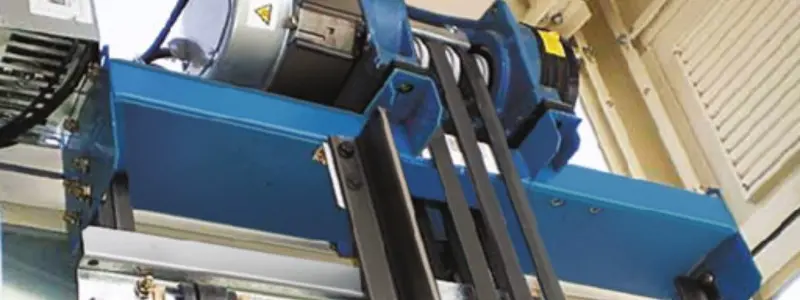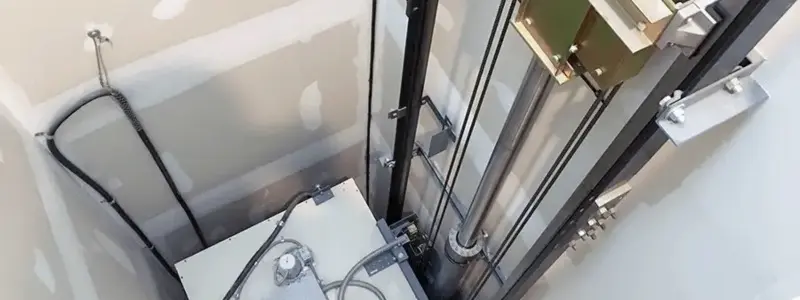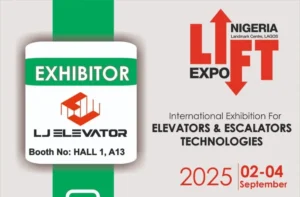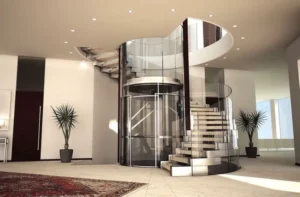Choosing the right elevator for your building can feel daunting. Traction or hydraulic? Both options serve unique needs, and deciding between them requires understanding their features, strengths, and limitations. What if you could simplify this decision by focusing on your building’s specific requirements, such as height, passenger volume, and budget? At LJ Elevator, we’re here to guide you with clear, professional insights tailored to your needs.
Traction elevators excel in speed, efficiency, and versatility, making them ideal for taller buildings. Hydraulic elevators, on the other hand, are cost-effective and better suited for low-rise structures, thanks to their simple installation and heavy load capacity. Your choice depends on your building’s needs and long-term priorities.
Still deciding? Let’s break down the features of each system in a professional, detailed way.

What Is a Traction Elevator, and How Does It Work?
Traction elevators, also known as electric or cable-driven elevators, utilize ropes or cables along with a motor-driven pulley system to move between floors. The ropes or cables are attached to a counterweight, which balances the elevator car, reducing the motor’s workload and enhancing energy efficiency.
At LJ Elevator, we offer both steel rope and steel belt traction systems. While steel belts provide quieter and smoother operation, traditional steel ropes remain a reliable choice for buildings with higher load demands. This flexibility allows us to recommend the most suitable solution for your specific needs. Explore traction elevator options here.
Advantages of Traction Elevators
- High Speed: Can exceed 500 feet per minute, ideal for high-rise buildings.
- Energy Efficiency: Counterweights reduce power consumption.
- Smooth Ride: Ensures passenger comfort.
- Long Lifespan: Durable components lead to longer service life.
Challenges of Traction Elevators
- Installation Complexity: Requires precise setup for ropes, counterweights, and motor systems.
- Building Requirements: Needs specific overhead and pit dimensions, which can add to installation time.

What Is a Hydraulic Elevator, and How Does It Work?
Hydraulic elevators rely on a piston and hydraulic fluid to lift and lower the elevator car. The fluid is pumped into a cylinder to raise the car and released back to lower it, offering smooth and controlled vertical movement.
These elevators are perfect for low-rise buildings (up to seven stories) and structures with heavy load requirements. They are cost-effective and require less structural modification compared to traction systems. Discover hydraulic elevator options here.
Advantages of Hydraulic Elevators
- Cost-Effective: Lower installation and maintenance costs.
- Heavy Load Capacity: Can handle larger weight loads efficiently.
- Simpler Installation: Requires minimal structural changes.
Challenges of Hydraulic Elevators
- Speed Limitations: Operate at slower speeds (up to 150 feet per minute).
- Height Restrictions: Best suited for buildings with fewer floors.
- Energy Consumption: Requires more power to pump hydraulic fluid.
Traction vs. Hydraulic: Addressing Customer Pain Points
Speed and Efficiency
If your building serves high passenger volumes or spans many floors, traction elevators are the better choice. They offer faster travel speeds and smoother rides, making them ideal for office buildings, hotels, or skyscrapers.
For smaller buildings or properties with moderate traffic, hydraulic elevators provide a cost-effective solution without compromising on reliability.
Installation Space
Traction elevators require a machine room or space for motor equipment, which may not always be feasible in older or space-constrained buildings. Modern traction options, like machine-room-less (MRL) designs, help address this issue.
Hydraulic elevators, especially hole-less or roped variations, are compact and space-efficient, making them suitable for retrofitting older properties.
Cost and Maintenance
Customers seeking long-term value may prefer traction elevators despite their higher initial costs, as they are more energy-efficient and have lower maintenance needs over time.
Hydraulic elevators are attractive for those with tighter budgets, offering lower upfront costs and quicker installation. However, their fluid system requires more frequent maintenance, which could add to lifetime expenses.
Types of Traction and Hydraulic Elevators
Traction Elevators
- Geared Traction: Uses a gearbox for smooth, quiet operation; suitable for medium to high-rise buildings.
- Gearless Traction: Offers higher speeds and capacities, ideal for skyscrapers.
- MRL (Machine-Room-Less): Integrates equipment into the shaftway, saving space and reducing costs.
Hydraulic Elevators
- In-Ground: Requires a pit below the shaft, ideal for retrofitting older buildings.
- Hole-Less Hydraulic: Space-saving option with no need for a pit.
- Roped Hydraulic: Combines hydraulic and mechanical systems for added stability.
Which System Is Better for Your Building?
High-Rise or High-Traffic Buildings
Traction elevators are your best bet, offering speed, efficiency, and durability for taller buildings. Their energy-saving design and smooth operation make them ideal for high-demand environments.
Low-Rise or Budget-Conscious Projects
Hydraulic elevators provide a practical, affordable solution for low-rise structures. Their simpler installation process and heavy load capacity are perfect for villas, hospitals, and small commercial properties.
At LJ Elevator, we specialize in matching the right elevator system to your building’s requirements. Whether you need the speed of a traction elevator or the reliability of a hydraulic system, our team ensures a tailored solution.
Conclusion
Choosing between traction and hydraulic elevators requires understanding your building’s unique needs. Traction elevators lead in speed and efficiency, making them ideal for high-rise and high-traffic environments. Hydraulic elevators excel in affordability and heavy-load performance for low-rise buildings.
At LJ Elevator, we pride ourselves on providing professional, personalized recommendations. With advanced technology, meticulous manufacturing processes, and customer-focused support, we’re here to deliver the perfect elevator for your project. Contact us today, and let’s elevate your building to new heights!





